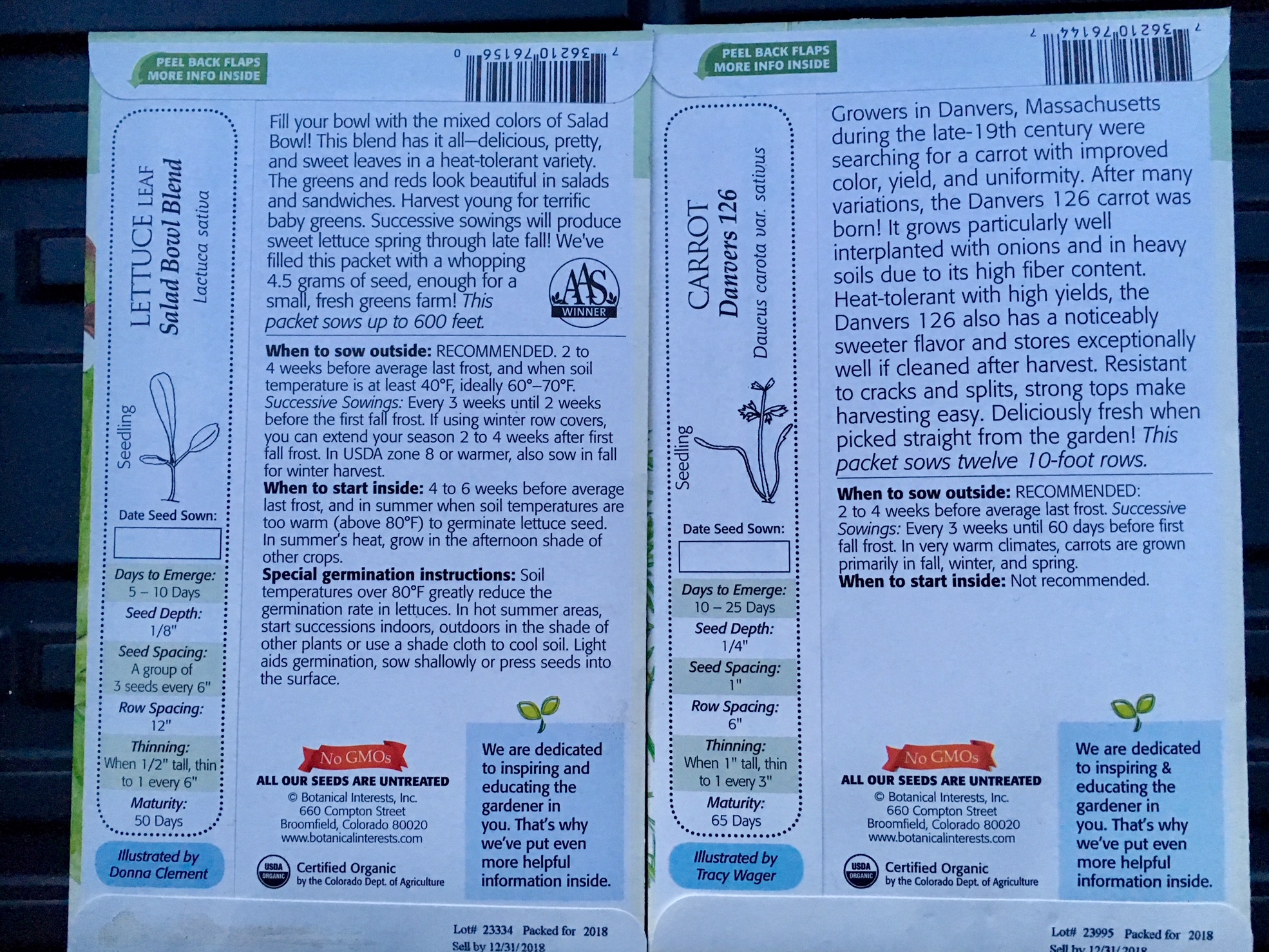From our friends at CSU Denver Extension Horticulture:
If you can read and follow instructions, you can grow a garden.
Most seed packets have all the information a gardener needs to plant and grow whatever seeds are hidden inside. Whether you want to plant flowers, herbs, fruits or vegetables, let the seed packet be your guide.
Instead of falling for the picture on the front of each packet, study the back, especially the number of days to harvest for fruits and vegetables. Our area has a limited number of days for growing each season, and the fewer the days to harvest (especially for tomatoes), the more success you’ll have.
Here’s the most important information seed companies want you to have — and to use:
Plant name–Both the common name, like Bloomsdale Longstanding spinach, and the scientific name, Spinacia oleracea.
Type of plant—Types can include heirloom, hybrid, organic and other identifiers.
Plant description—The description includes basic information on whether the plant is an annual, biennial or perennial and some of its key features. The plant’s history, height and width may also be included.
Packed for date—Seeds are packed for and sold by the current year; however, seeds packed for previous years are usually good to plant for several years.
Planting time—Planting time depends on weather conditions for a specific area. Some packets include hardiness zone maps with a month or a range of months for planting.
Seed packets will also give information on whether to start seeds indoors or to plant seeds outside.
- Start seeds inside according to the packet’s recommendation, usually 6-8 weeks before the average last frost date. CSU Extension offers a guide to frost dates to help with garden planning. Avoid planting seeds too early.
- Plant seeds outdoors after the soil has dried and warmed to the optimum soil temperature. A CSU Extension handout and a kitchen or digital thermometer will help determine when to plant specific vegetables. Planting too soon or too late could be a reason some seeds fail to sprout.
Light needs—The amount of sunlight plants need from full sun to partial shade. Most fruits and vegetables need at least 6 hours of sun every day.
Row spacing—The amount of space between rows allows enough space for plants to grow without being crowded.
Planting space—Spacing is also critical between individual plants. Spacing may include how closely to plant seeds and how to thin the plants once they start growing.
Seed depth—Use a ruler or other guide and follow seed depth recommendations. If seeds are planted too deep, they may have a hard time reaching the top of the soil.
Days to sprout or germinate—Keep track of germination dates so you’ll know the timing of when plants start to grow. If seeds fail to sprout, replant seeds and they should catch up quickly.
Days to harvest (or mature)—For vegetables, the harvest dates will vary depending on the variety or cultivar. Harvest fruits and vegetables when they’re at their peak and avoid leaving vegetables on plants too long.
Special information—Depending on the seeds and seed company, there may be growing notes, staking information, fertilizer recommendations, suggestions for cutting or harvesting, recipes and other tips for success.
By following the seed packet instructions, gardeners can guess less and get more enjoyment from their gardening experience.
By Jodi Torpey
A Denver Master Gardener

